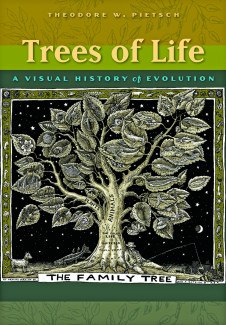
Johns Hopkins UniversityEst. 1876
America’s First Research University
The Press Reads: Trees of Life
Our occasional Friday series on the blog, The Press Reads, features short excerpts from recent JHUP books. We hope to whet your appetite and inspire additions to your reading list. Today's selection is drawn from the preface of Trees of Life: A Visual History of Evolution by Theodore W. Pietsch. Trees of Life, embraced by reviewers across many disciplines, is now available in trade paperback.

This is a book about trees—not the transpiring, photosynthesizing kind, but tree-like branching diagrams that attempt to show the interrelationships of organisms, from viruses and bacteria to birds and mammals, both living and fossil. It is not intended as a treatise about the philosophy or science behind tree construction, nor is it a defense or refutation of the various relationships depicted among organisms. It is rather a celebration of the manifest beauty, intrinsic interest, and human ingenuity revealed in trees of life through time.
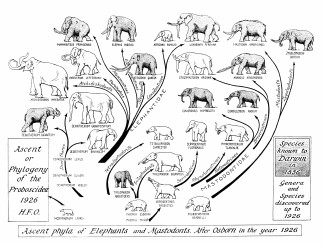
The emphasis is on the images, arranged chronologically, two hundred and thirty chosen from among thousands of possibilities, dating from the mid-sixteenth century to the present day. The descriptive text is kept to a minimum—just enough to provide context.
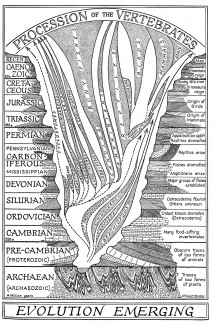
The focus of this book is on diagrams that resemble trees in the botanical sense, images with parts analogous to trunks, limbs, and terminal twigs, but other configurations are also explored as precursors and variations on the theme of biosystematic iconography. These various related images include bracketed tables—trees laid on their side—similar to modern-day analytical keys; maps, or so-called archipelagos, that hypothesize relationships analogous to the juxtaposition of geographical territories; webs or networks, in which individual taxa or chains of taxa are interconnected by lines of affinity or resemblance; and various numerical, symmetrical and geometric systems.
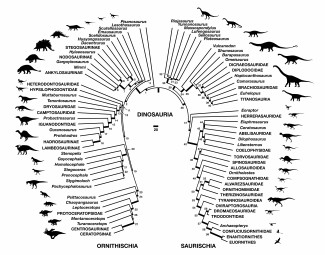
While their choice of imagery varied considerably, most all eighteenth- and early nineteenth-century naturalists were working toward the same goal: to construct classifications of plants and animals that were “natural.” Their thought was that organisms brought together in “natural classifications” ought to share “natural affinities.” But just exactly what was meant by “natural affinity,” remained an unresolved question. It was Darwin’s theory of evolutionary change by means of natural selection that provided the missing context and unified the work of biosystematists in their pursuit of a natural system of classification. The phylogenetic tree as we know it today was one conspicuous result.
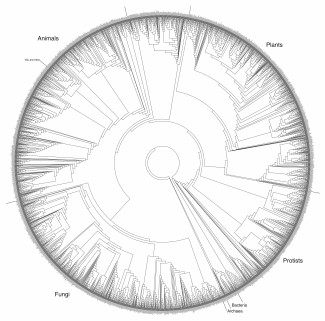
Brain Pickings posted a review of Trees of Life, which you can read here.
“A luminous book . . . For classroom use, the brevity and simplicity of the introductory remarks will serve instructors who wish to teach these images’ and their authors’ significance to the history of biology and the history of scientific illustration. Biologists, historians of science, scholars interested in the intersections between art and design and science will find an abundance of images and wise commentary that reveals new details with each reading.”
— Christine Manganaro, Journal of the History of Biology
“With the concept of evolution now often iconified to the point of misrepresentation, Trees of Life reminds us that both the idea and its representation were—and are—fluid, debated, and reconstructed.”
—Camillia Matuk, Science
“Trees of Life commemorates the tree as a visual representation of life; science buffs will revel in this dazzling forest of transformation.”
—Jen Forbus, Shelf Awareness
